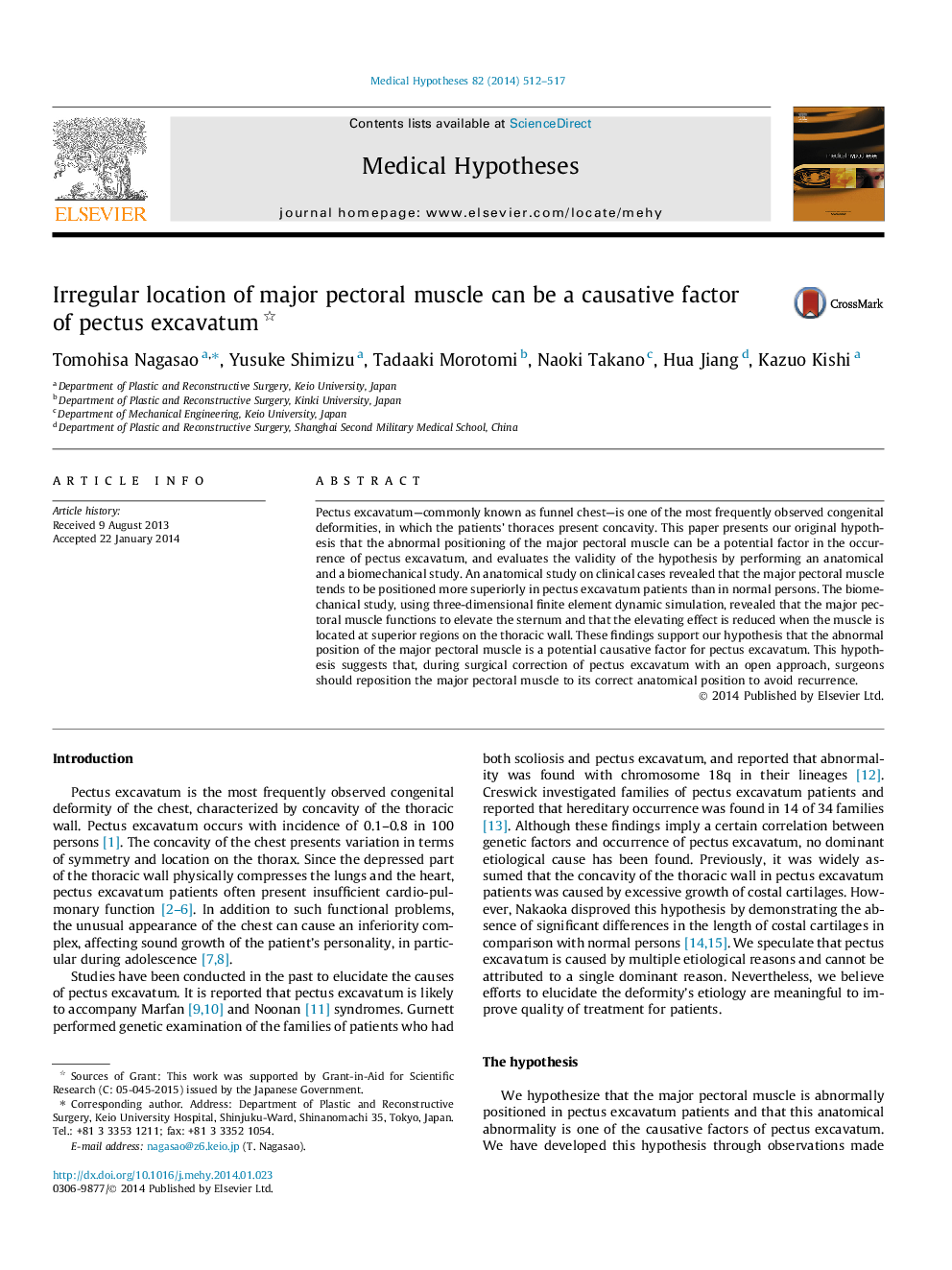| Article ID | Journal | Published Year | Pages | File Type |
|---|---|---|---|---|
| 5811985 | Medical Hypotheses | 2014 | 6 Pages |
Pectus excavatum-commonly known as funnel chest-is one of the most frequently observed congenital deformities, in which the patients' thoraces present concavity. This paper presents our original hypothesis that the abnormal positioning of the major pectoral muscle can be a potential factor in the occurrence of pectus excavatum, and evaluates the validity of the hypothesis by performing an anatomical and a biomechanical study. An anatomical study on clinical cases revealed that the major pectoral muscle tends to be positioned more superiorly in pectus excavatum patients than in normal persons. The biomechanical study, using three-dimensional finite element dynamic simulation, revealed that the major pectoral muscle functions to elevate the sternum and that the elevating effect is reduced when the muscle is located at superior regions on the thoracic wall. These findings support our hypothesis that the abnormal position of the major pectoral muscle is a potential causative factor for pectus excavatum. This hypothesis suggests that, during surgical correction of pectus excavatum with an open approach, surgeons should reposition the major pectoral muscle to its correct anatomical position to avoid recurrence.
